Milk under the microscope
Scanning electron microscope provides high-resolution images of cow's milk and alternatives
Advertisement
For a long time, the consumption of cow's milk was considered very healthy, but is increasingly coming under criticism for ecological reasons. In the meantime, many plant-based alternatives are on the market: from soy and rice to oat, almond or cashew drinks. But what exactly do they contain, if you take a closer look? Why do they look and feel like milk in your mouth? A team of scientists from Münster University of Applied Sciences has examined the white liquids under the microscope. More precisely, under the scanning electron microscope of the Department of Physical Engineering. This special laboratory device can zoom in so close to samples that individual molecule clusters can be seen in the surface structures. The decisive factor for the project was an inquiry from WDR, specifically the creator of @beautyquarks. On their Instagram account they show "the world as you have never seen it before" in unusual, mostly scientific pictures. Now they present on their channel the measurements taken at the FH Münster.
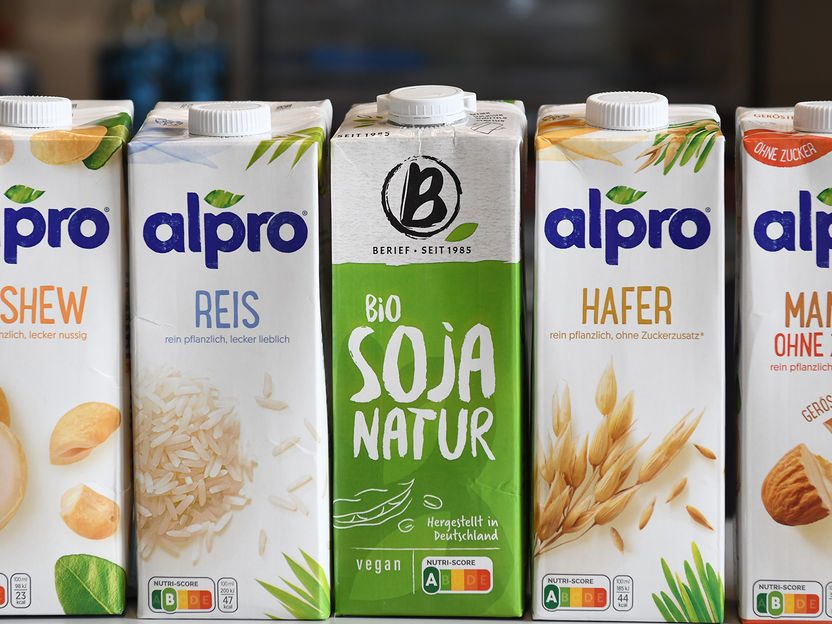
There are now numerous plant-based alternatives to cow's milk. Scientists at Münster University of Applied Sciences and journalists from @beautyquarks asked themselves what ingredients the various drinks contain under the scanning electron microscope.
FH Münster/Stefanie Gosejohann
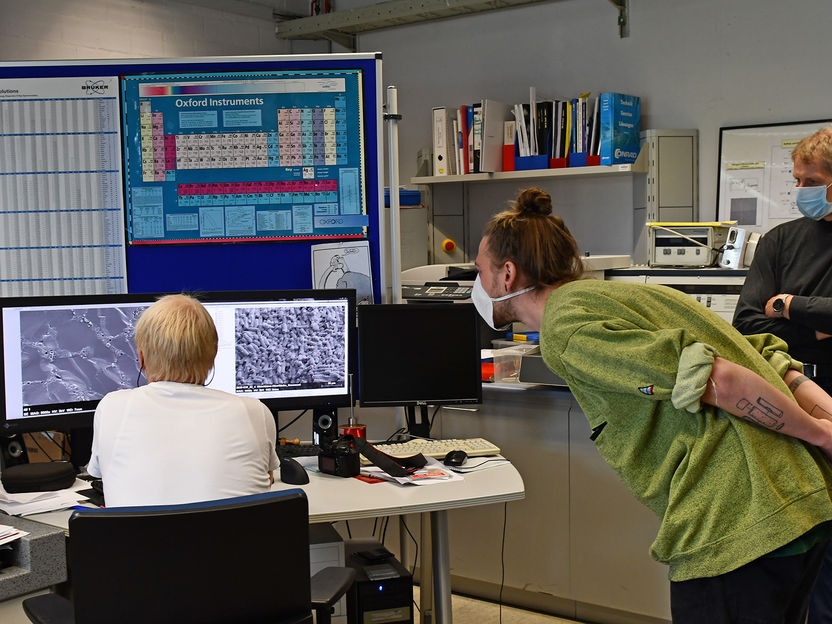
Laboratory engineer Holger Uphoff, Jonas Berger from @beautyquarks and Prof. Dr. Hans-Christoph Mertins (from left) in front of the research results.
FH Münster/Stefanie Gosejohann
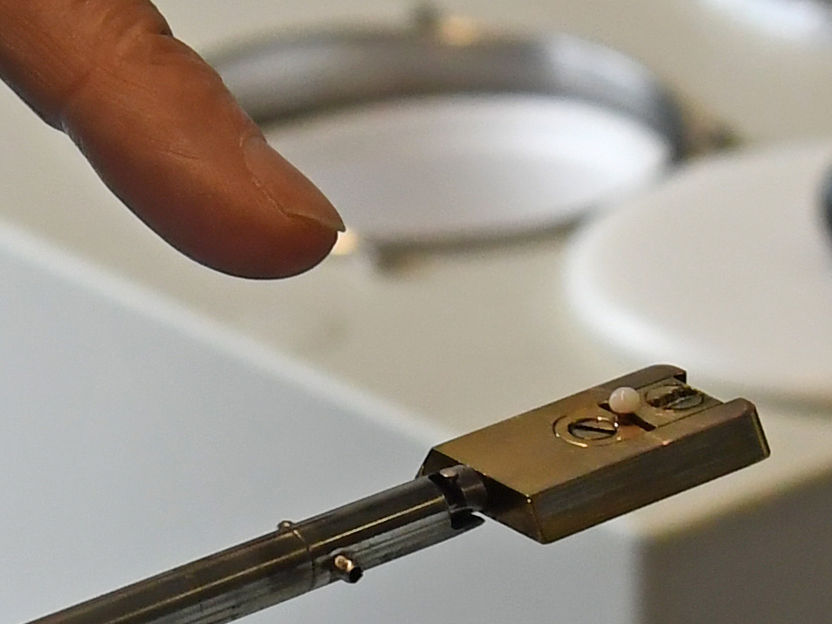
Only a tiny drop of the respective milk product is examined microscopically.
FH Münster/Stefanie Gosejohann
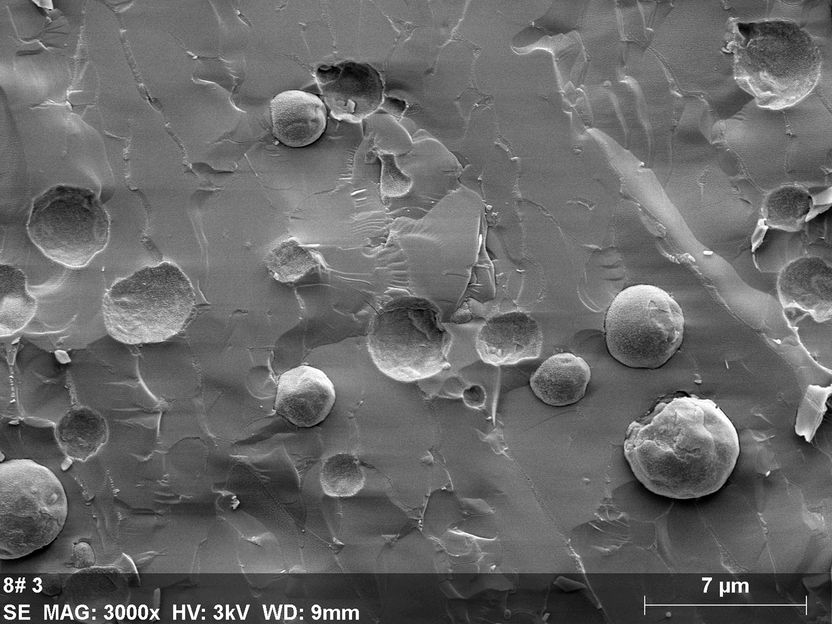
The fat globules in cow's milk are clearly visible under the scanning electron microscope. They are 10 to 20 times thinner than a hair.
FH Münster/Fachbereich Physikingenieurwesen
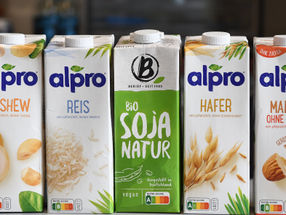
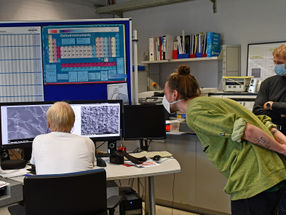
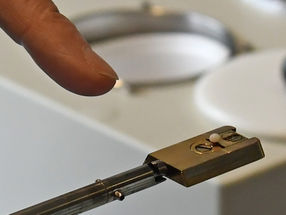
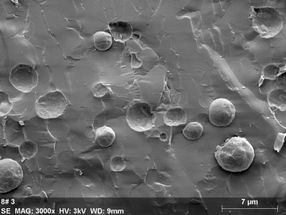
"Impressive pictures have been taken that show even the layman how much less fat globules an oat drink contains compared to cow's milk," explains Prof. Dr. Hans-Christoph Mertins. Together with his colleague Holger Uphoff, the physics engineer carried out the series of investigations in the Laboratory of Physics of Materials/ Electron Microscopy. "Our laboratory has a wide range of state-of-the-art equipment that enables us to effectively analyse materials, from classical metals to biological substances and even quantum dots from nanotechnology with almost atomic resolution," says Mertins. "This benefits not only research departments of small and medium-sized companies that cooperate with us, but also our students - especially those on the Materials Science and Engineering master's degree course". They are already allowed to carry out their own investigations in various internships.
In order to be able to better analyze the images of the different types of milk, the physics engineers brought an expert from the Department of Oecotrophology - Facility Management on board: Prof. Dr. Guido Ritter. "The natural fat of cow's milk is enclosed in emulsion globules. During homogenisation, these are broken down to a size of around one micrometre, which distributes the fat evenly in the milk and creates a pleasantly creamy feeling in the mouth", explains the sensory expert "In order to achieve this mouthfeel of real milk and not to appear too watery, the milk substitutes are also homogenised and often made creamy with thickening agents". However, the images of the scanning electron microscope clearly show that the casein membranes typical of animal milk are missing, which surround the fat droplets. This is why the vegetable milk substitute drinks often tasted less creamy and more watery. "Milk is simply unique in structure and composition, which is why the legislator also protects the term. The purely vegetable products are therefore only ever found in the trade under the name 'drink'. His concluding conclusion: "The vegetable milk substitute drinks offer a vegan alternative to cow's milk. Although one has to get used to it sensory first, they have advantages from a nutritional and ecological perspective.
Even if soy drinks and the like often do not offer the same taste experience as cow's milk, they nevertheless provide fascinating images under the scanning electron microscope, which can now be admired at @beautyquarks.
Note: This article has been translated using a computer system without human intervention. LUMITOS offers these automatic translations to present a wider range of current news. Since this article has been translated with automatic translation, it is possible that it contains errors in vocabulary, syntax or grammar. The original article in German can be found here.

































































